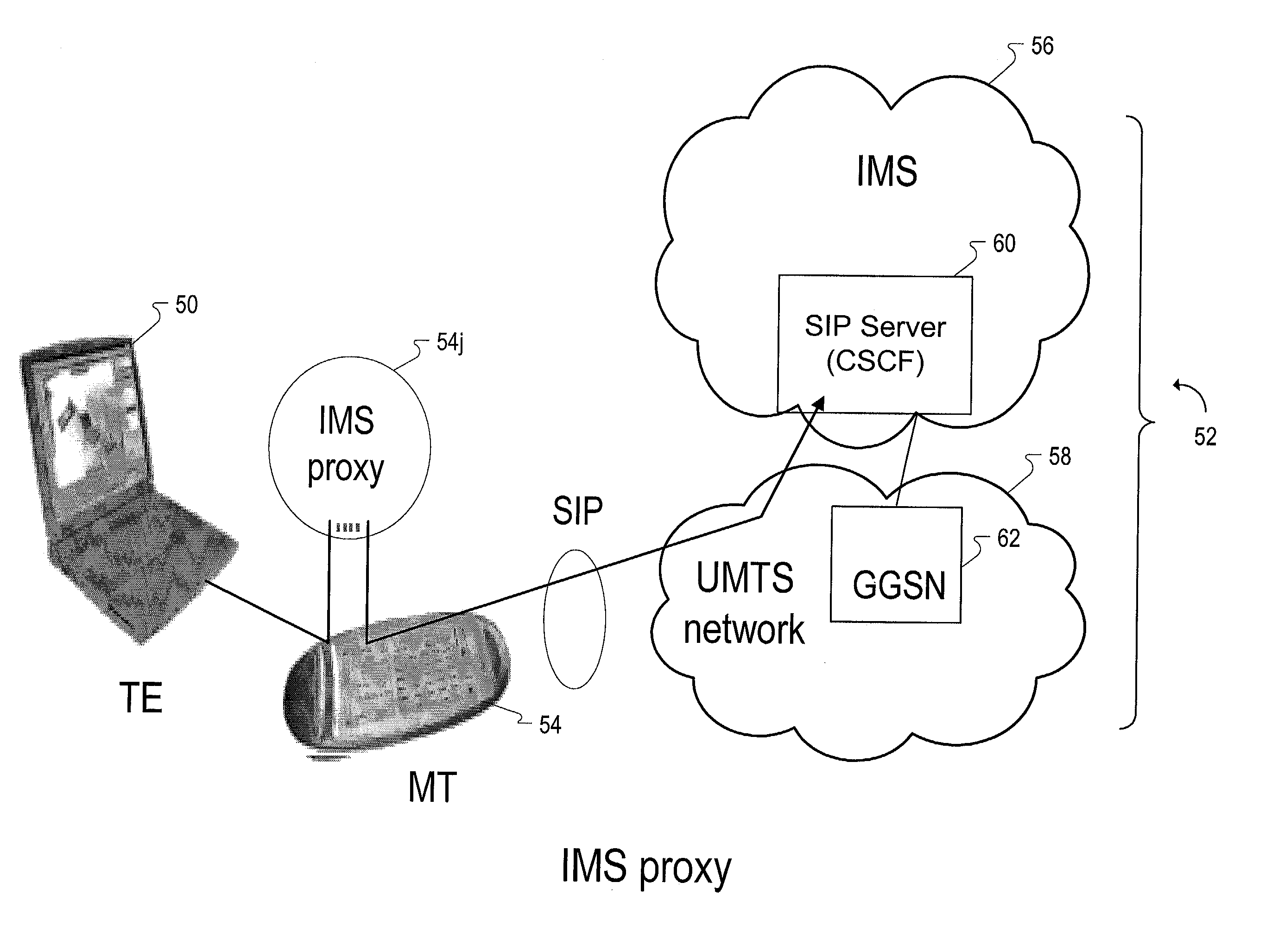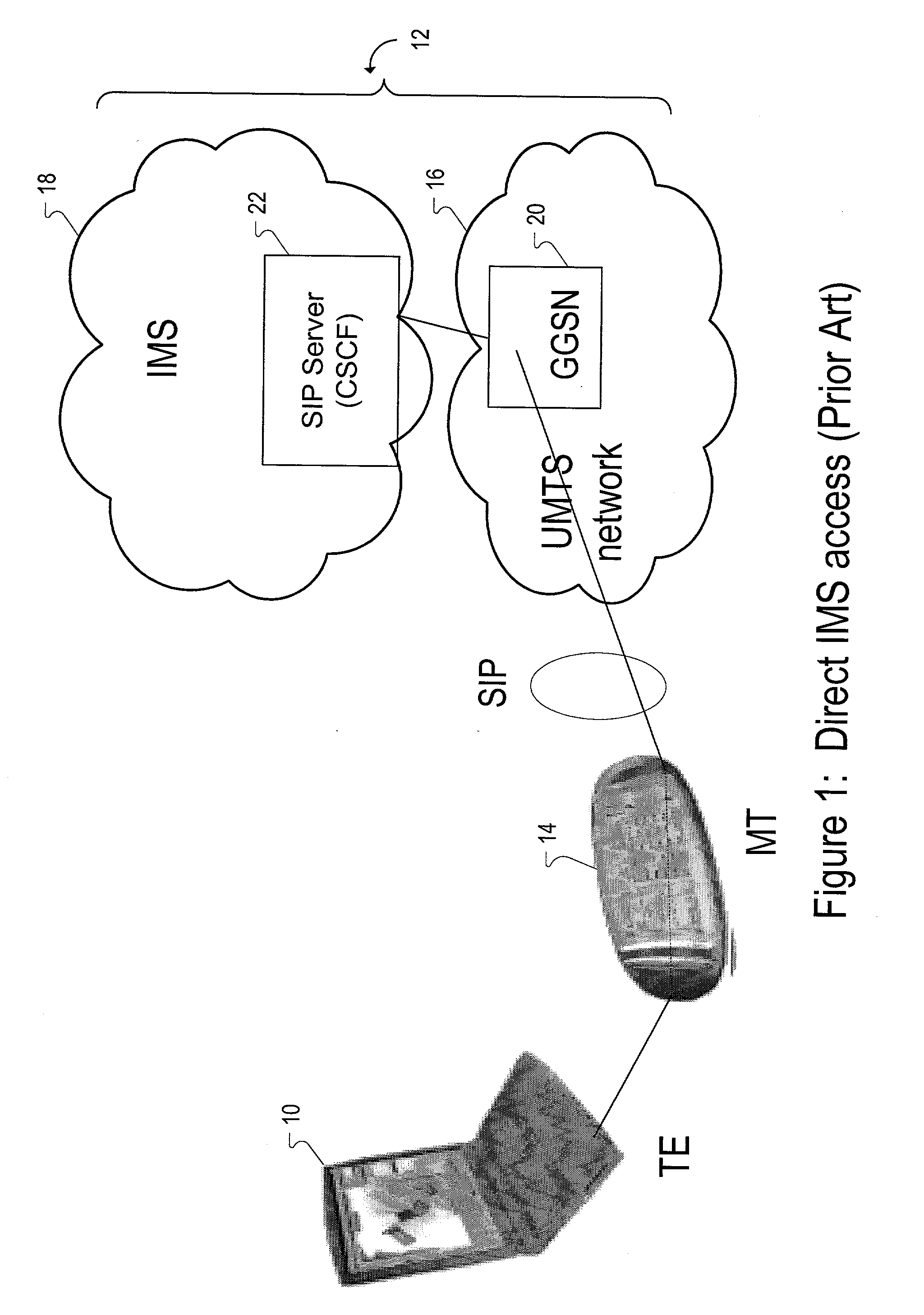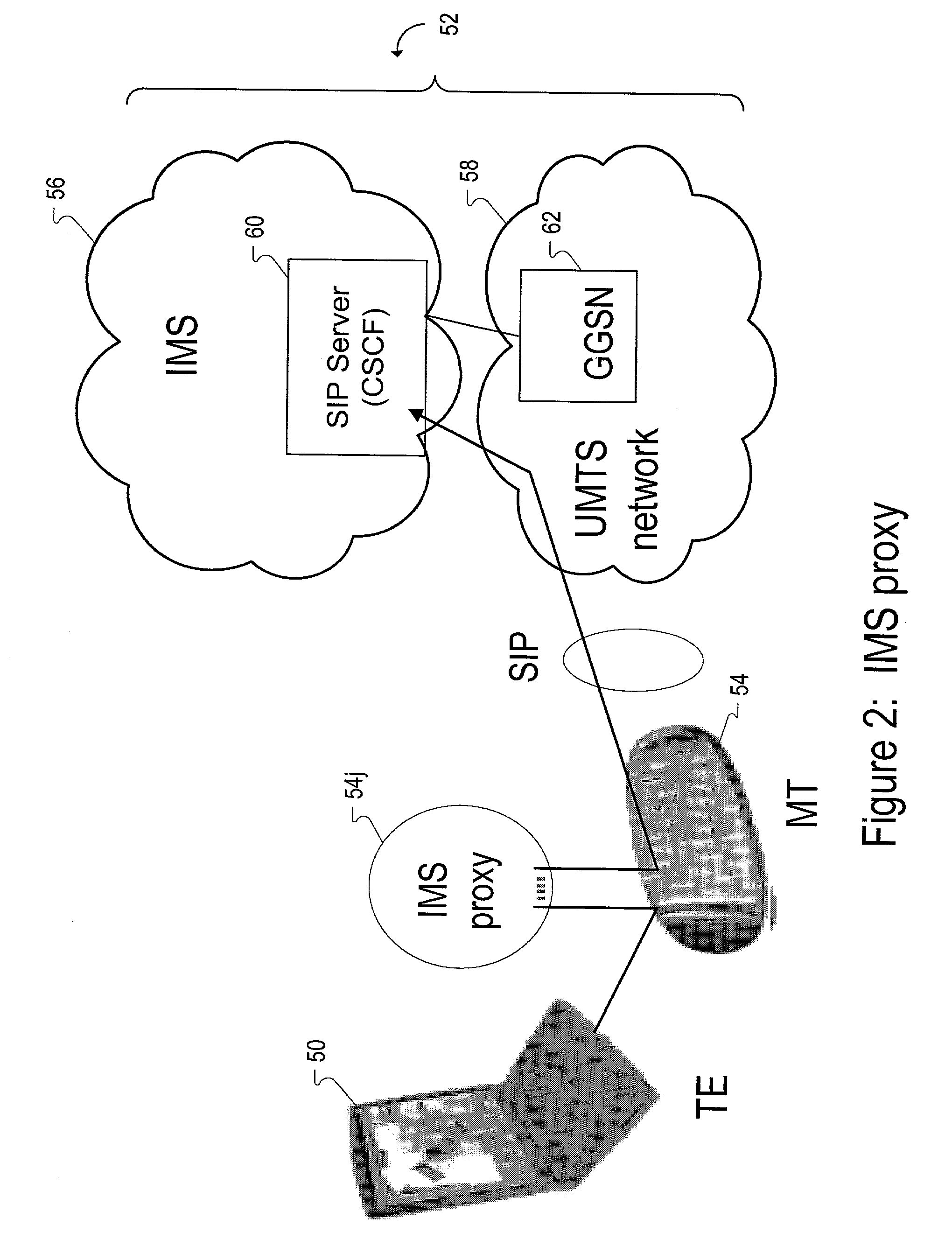Functionality split between mobile terminal and terminal equipment for internet protocol multimedia signal exchange
a technology of multimedia signal exchange and mobile terminal, which is applied in the field of mobile terminals or phones, can solve the problems of not providing an open platform for all types of terminal equipment, and achieve the effect of enhancing the controller role of mobile terminals
- Summary
- Abstract
- Description
- Claims
- Application Information
AI Technical Summary
Benefits of technology
Problems solved by technology
Method used
Image
Examples
Embodiment Construction
FIG. 2: The Basic Invention
[0039] FIG. 2 shows a method and apparatus for connecting terminal equipment 50 to a wireless network 52 with a mobile terminal 54, wherein the mobile terminal 54 is assigned proxy functions generally indicated as 54j that control access of the terminal equipment 50 to the wireless network 52.
[0040] The wireless network 52 includes a universal mobile telecommunications system (UMTS) network 56 coupled to an internet protocol multimedia subsystem (IMS) 58. The communication protocol between the mobile terminal 54 and the internet protocol multimedia subsystem (IMS) 58 is a session initiation protocol (SIP). The universal mobile telecommunications system (UMTS) network 56 includes a gateway general packet radio system support node (GGSN) 60, while the internet protocol multimedia subsystem (IMS) 58 includes a session initiation protocol (SIP) server 62 to handle call state control functions. The proxy functions control the access of the terminal equipment 54...
PUM
 Login to View More
Login to View More Abstract
Description
Claims
Application Information
 Login to View More
Login to View More - R&D
- Intellectual Property
- Life Sciences
- Materials
- Tech Scout
- Unparalleled Data Quality
- Higher Quality Content
- 60% Fewer Hallucinations
Browse by: Latest US Patents, China's latest patents, Technical Efficacy Thesaurus, Application Domain, Technology Topic, Popular Technical Reports.
© 2025 PatSnap. All rights reserved.Legal|Privacy policy|Modern Slavery Act Transparency Statement|Sitemap|About US| Contact US: help@patsnap.com



